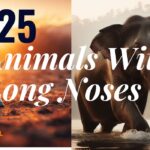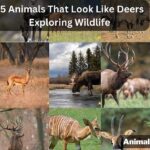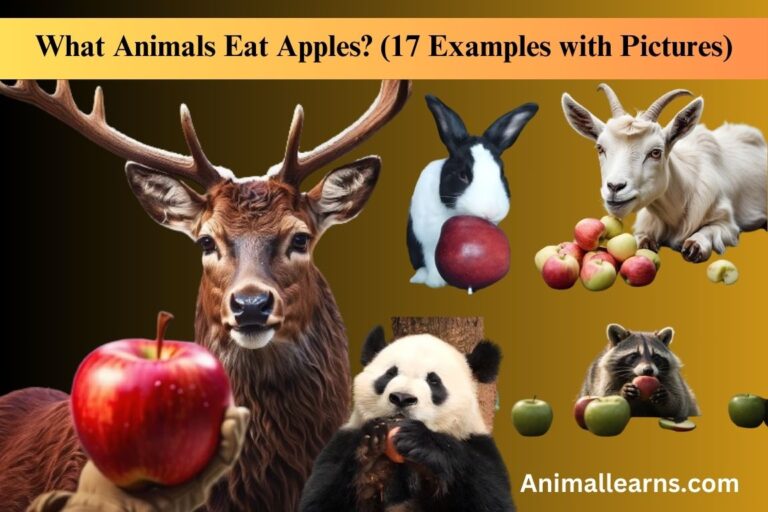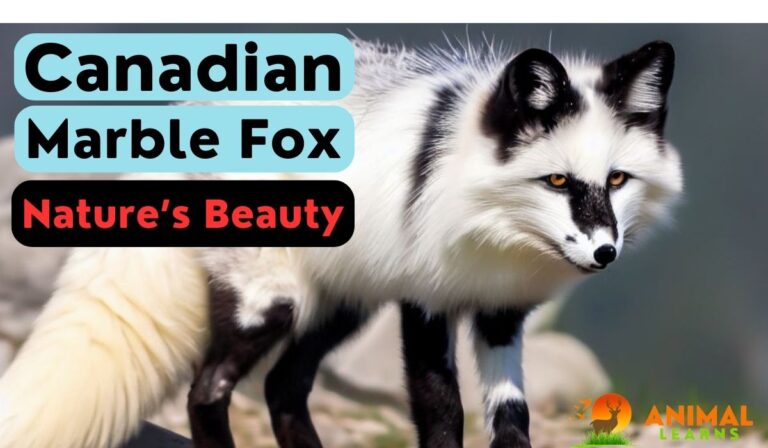15 Big Lips Animal: A Remarkable Feature In Nature

Exploring big lips animal species provides a captivating glimpse into the remarkable evolutionary pathways in the natural world. Animals exhibit a remarkable array of adaptations, and one intriguing feature that some possess is big lips.
When we inquire, “Which animal has the biggest lips?” we may not think immediately of the Elephant Seal, known for its colossal size and trunk-like proboscis, a specialized adaptation used for various functions, including vocalizations and thermoregulation.
Not far behind in the “big lips” category is the Indian Elephant, which boasts a versatile and dexterous trunk, serving as an elongated upper lip for feeding and an array of other tasks. From these land giants to marine behemoths, it’s fascinating to explore the diversity of big lips in the animal kingdom.
Animals with big lips, big ears, and big foreheads often display unique and captivating features that reflect their distinct evolutionary paths and ecological roles.
Big Lips Animal
Contents
- Elephant Seal
- Proboscis Monkey
- Mandrill
- Platypus
- Gharial
- Tapir
- Saiga Antelope
- Blue Whale
- Green Sea Turtle
- Indian Elephant
- Tasmanian Devil
- Japanese Giant Salamander
- Dromedary Camel
- Aye-Aye (a type of lemur)
- Bactrian Camel
Elephant Seal
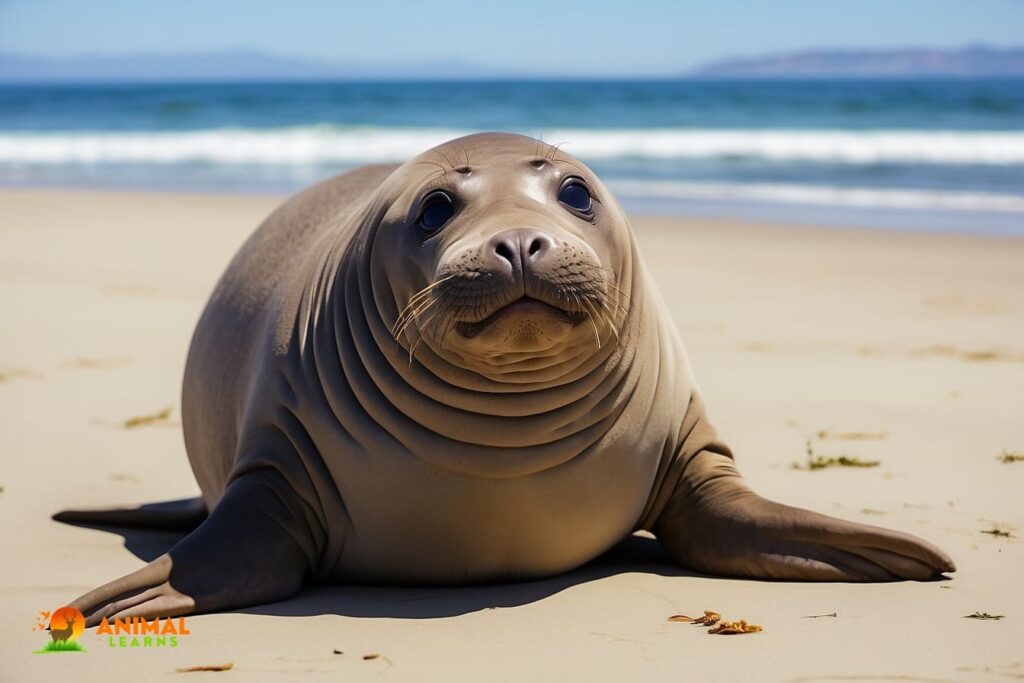
| Attribute | Information |
| Scientific Name | Mirounga |
| Size | Males: Up to 16 feet (4.9 meters) |
| Females: Up to 10 feet (3 meters) | |
| Diet | Carnivorous, primarily fish and squid |
| Group | Pinniped (Seals) |
| Location | Coastal regions, primarily Antarctica |
| Running Speed | On land, very slow; in water, agile swimmers |
The Elephant Seal is distinguished by its massive size and distinctive proboscis, as well as by its nasal appendage that resembles a trunk. This adaptation, which is more common in males, has several uses, one of which is the ability to produce vocalizations that are deep and resonant and audible from a great distance.
The size of the proboscis and the loudness of vocalizations are important factors in establishing dominance and luring partners throughout the mating season. The Southern Ocean and its surrounding seas are home to these seals, who are the biggest pinnipeds.
These marine mammals exemplify the fascinating diversity of adaptations found in “big lips animals” across the animal kingdom.
Proboscis Monkey

| Attribute | Information |
| Scientific Name | Nasalis larvatus |
| Size | Approximately 19-24 inches (48-60 cm) |
| Diet | Primarily herbivorous, feeding on leaves, |
| fruits, and flowers | |
| Group | Old World Monkey |
| Location | Borneo, along rivers and mangroves |
| Running Speed | Agile climbers, not particularly fast runners |
The Proboscis Monkey is a Borneo mangrove and river native, distinguished by its remarkably huge and pendulous nose. Due to sexual selection, this distinctive trait developed because females often choose males with larger noses.
Their nose is a visual indicator of health and genetic fitness as well as a resonating chamber for their characteristic honking cries. These socially grouped monkeys spend a lot of time in trees.
Mandrill
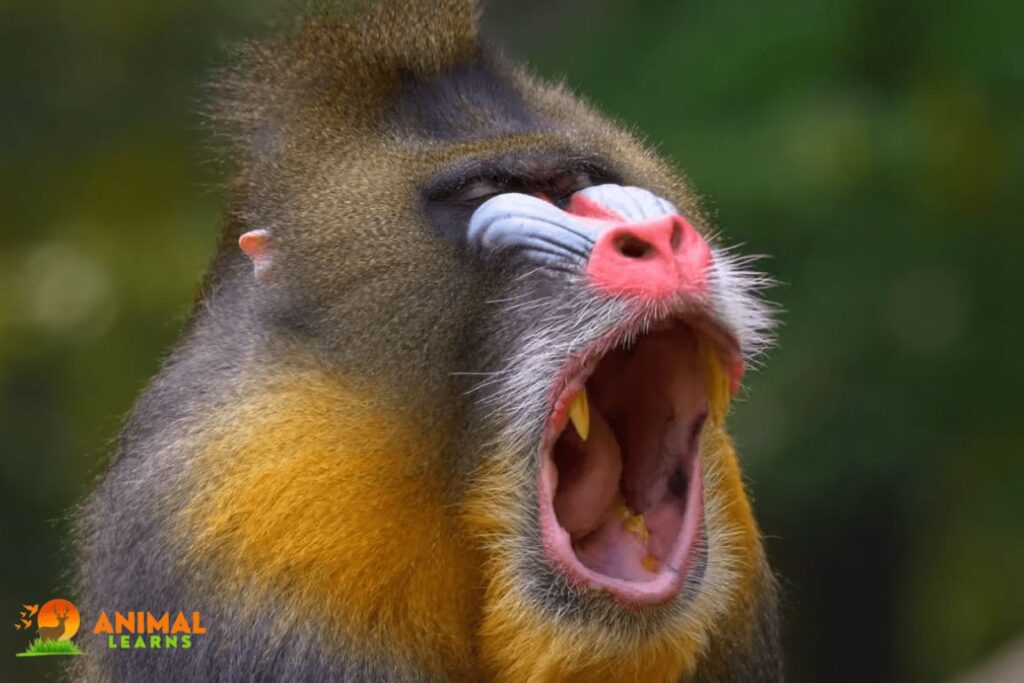
| Attribute | Information |
| Scientific Name | Mandrillus sphinx |
| Size | Length: Up to 3.3 feet (1 meter) |
| Diet | Omnivorous, consuming fruits, seeds, |
| insects, and small animals | |
| Group | Old World Monkey |
| Location | Rainforests of Central Africa |
| Running Speed | Capable of rapid bursts of speed |
Found in the thick woods of Central Africa, mandrills are Old World monkeys. Their distinctive features include remarkably wide lips and face coloring that alternates between blue and red.
These colors, which are more noticeable in dominant males, are essential for establishing social hierarchy among their units as well as for intraspecific communication.
Platypus

| Attribute | Information |
| Scientific Name | Ornithorhynchus anatinus |
| Size | Approximately 16 inches (40 cm) |
| Diet | Carnivorous, primarily aquatic invertebrates |
| Group | Monotreme (Egg-laying mammal) |
| Location | Eastern Australia, particularly in freshwater |
| Running Speed | Non-terrestrial, semi-aquatic |
The Platypus, an unusual and fascinating big lips animal, possesses specialized, fleshy mouthparts used for locating and capturing aquatic invertebrates. Native to Australia, the Platypus is known for having an unusual set of traits, such as webbed feet and a beak like a duck.
Although they are not usually thought of as having “big lips,” their meaty, rubbery mouthparts are essential for seeing and catching their prey, which is mostly aquatic invertebrates. One of the few species of monotremes, or egg-laying animals, in the world is the platypus.
Gharial

| Attribute | Information |
| Scientific Name | Gavialis gangeticus |
| Size | Adult males: Up to 20 feet (6.1 meters) |
| Adult females: Smaller | |
| Diet | Piscivorous, primarily fish |
| Group | Crocodile (Long, thin snout) |
| Location | Subcontinent of India, Nepal, Bangladesh |
| Running Speed | Agile swimmers, not particularly fast runners |
Found in the rivers of the Indian subcontinent, the Gharial has a long, thin snout and a characteristic jawline with expanded lips. Its piscivorous diet depends on these characteristics, which also enable it to capture fish more accurately. Regretfully, habitat degradation and human meddling have put gharials in grave risk of extinction.
Tapir
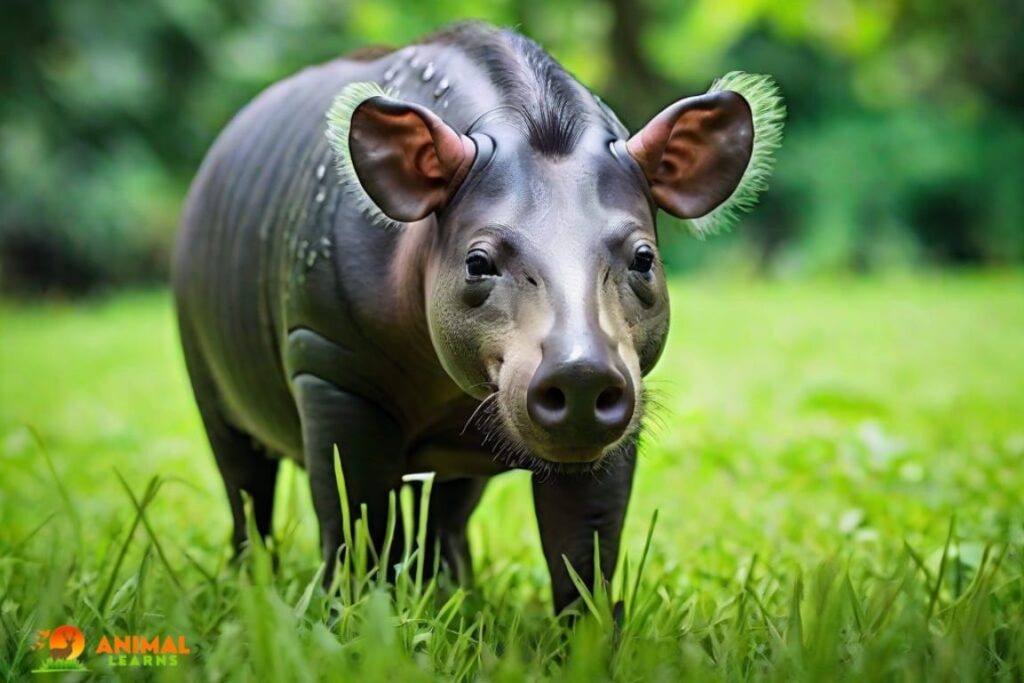
| Attribute | Information |
| Scientific Name | Tapirus species (various) |
| Size | Varies by species, up to 8 feet (2.4 meters) |
| Diet | Herbivorous, consuming leaves, twigs, fruits |
| Group | Perissodactyl (Odd-toed ungulate) |
| Location | Central and South America, rainforests |
| Running Speed | Moderate speed, good swimmers |
The Tapir, often regarded as a big lips animal, relies on its flexible and elongated upper lip to efficiently grasp leaves and twigs in its herbivorous diet. Because of their unique snout, which makes it possible for them to successfully grip leaves and twigs, they are crucial seed dispersers in the ecosystems of their forests. They are essential to preserving their ecosystems’ biodiversity.
Saiga Antelope
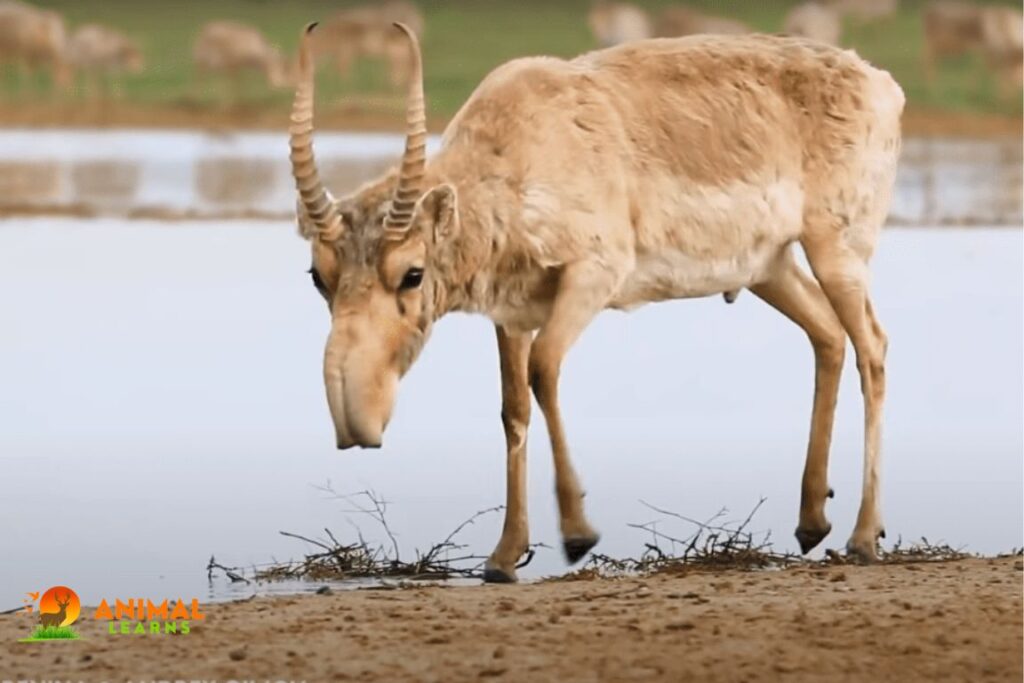
| Attribute | Information |
| Scientific Name | Saiga tatarica |
| Size | Length: Up to 3.5 feet (1 meter) |
| Diet | Herbivorous, primarily grazing on grasses |
| Group | Bovidae (Antelope) |
| Location | Eurasian steppe regions |
| Running Speed | Fast runners, capable of bursts of speed |
Saiga Antelopes are large, bulbous-nosed animals that roam the vast Eurasian steppes. In hot, dry weather, they use their nostrils to filter away dust and cool entering air. Males are more likely to have these characteristic nostrils, which are vital for air filtering and thermoregulation that enable them to survive in their arid, hostile habitats.
Blue Whale

| Attribute | Information |
| Scientific Name | Balaenoptera musculus |
| Size | Length: Up to 100 feet (30 meters) or more |
| Diet | Filter feeder, primarily krill and plankton |
| Group | Baleen Whale |
| Location | Oceans worldwide, typically in open seas |
| Running Speed | Slow-moving in water, not designed for speed |
The biggest mammal to have ever lived on Earth, the blue whale is not recognized for having “big lips animal” in the conventional sense. These gentle giants have enormous baleen plates on their mouths and are found in waters all around the world.
They can eat enormous amounts of small plankton and krill thanks to these plates’ excellent filtering capabilities, which also allow them to evacuate water via their baleen, leaving the food behind. The blue whale is now considered a remarkable miracle of marine biology because of its eating method.
Green Sea Turtle

| Attribute | Information |
| Scientific Name | Chelonia mydas |
| Size | Shell Length: Up to 5.2 feet (1.6 meters) |
| Diet | Herbivorous, primarily seagrasses and algae |
| Group | Reptile (Sea Turtle) |
| Location | Tropical and subtropical oceans worldwide |
| Running Speed | Agile swimmers, not designed for speed |
Green Sea Turtles are recognized by having comparatively big, recognizable lips with pointed beaks. Their herbivorous diet, which mostly consists of algae and seagrasses, depends on these beaks.
These extinct reptiles are vital keystone species that preserve the equilibrium of underwater environments in addition to improving the health of marine ecosystems.
Indian Elephant
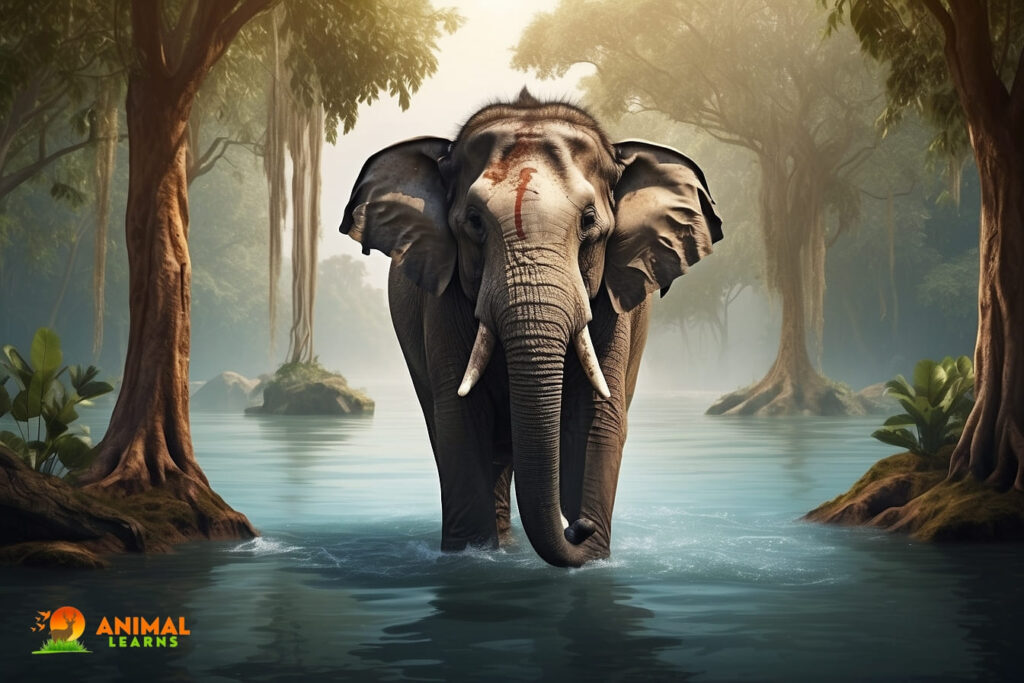
| Attribute | Information |
| Scientific Name | Elephas maximus indicus |
| Size | Height: Up to 10-13 feet (3-4 meters) at |
| the shoulder | |
| Diet | Herbivorous, consuming a variety of plant |
| materials, including grass, leaves, and bark | |
| Group | Mammal (Proboscidea) |
| Location | Indian subcontinent, various habitats |
| Running Speed | Capable of moderate speed, around 25 mph |
The Indian Elephant, a majestic big lips animal, features a versatile trunk, functioning as an elongated upper lip, essential for feeding and various tasks. The extraordinary trunk of the Indian Elephant, which is basically an extended and agile upper lip, is a source of great celebration and reverence in Indian culture.
With its many uses ranging from gripping food and drinking water to interacting with other elephants and manipulating items in their surroundings, this prehensile organ is adaptable and essential.
Tasmanian Devil
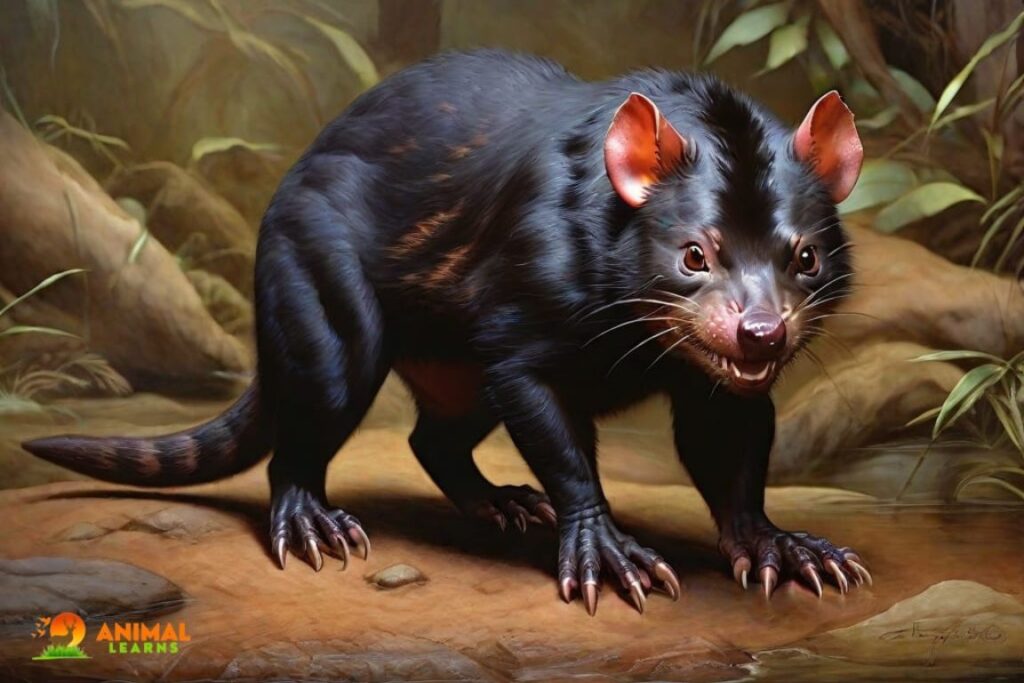
| Attribute | Information |
| Scientific Name | Sarcophilus harrisii |
| Size | Length: Up to 25 inches (63 cm) |
| Diet | Carnivorous, scavenging on a variety of prey, |
| including small mammals and birds | |
| Group | Marsupial (Dasyurid) |
| Location | Native to Tasmania, Australia |
| Running Speed | Agile runners, capable of quick sprints |
The Tasmanian Devil’s relatively large lips complement its strong jaw, making it a distinctive member of the big lips animal category. This carnivorous mammal, which is indigenous to the island of Tasmania, is infamous for its vicious temperament and strong bite.
Its powerful jaw is complemented by its rather big lips, which may not be its most prominent feature. Because of these modifications, it may effectively forage in the Tasmanian bush by crushing bones.
Japanese Giant Salamander
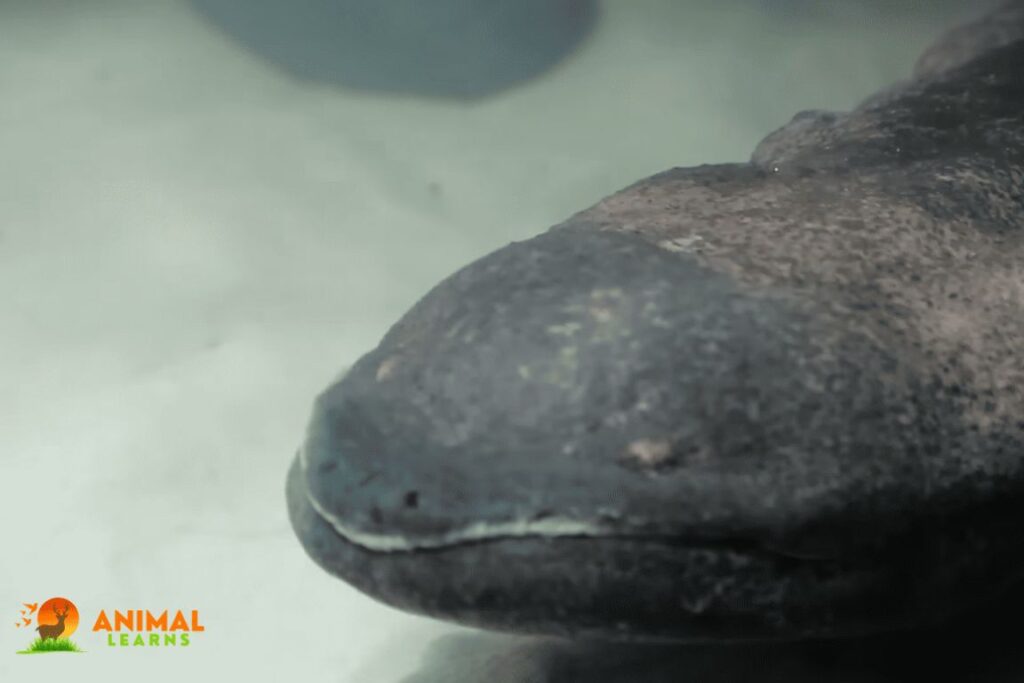
| Attribute | Information |
| Scientific Name | Andrias japonicus |
| Size | Length: Up to 1.5 meters (5 feet) or more |
| Diet | Carnivorous, preying on fish and invertebrates |
| Group | Amphibian (Salamander) |
| Location | Rivers of Japan, particularly in clear, |
| fast-flowing waters | |
| Running Speed | Slow-moving aquatic animals |
Found in Japan’s clear, swift-moving rivers, this species has comparatively big lips and a wrinkled, meaty look. These characteristics, which are unique to their aquatic way of existence, help them catch prey and absorb oxygen via their skin.
Not only do these salamanders have interesting lip characteristics, but they are also thought of as living fossils, which makes them fascinating.
Dromedary Camel

| Attribute | Information |
| Scientific Name | Camelus dromedarius |
| Size | Height at the hump: Up to 6.6 feet (2 meters) |
| Diet | Herbivorous, feeding on various desert plants |
| Group | Mammal (Camelid) |
| Location | Arid regions of Africa and Asia, deserts |
| Running Speed | Capable of reaching speeds of 40 mph (64 km/h) |
The Dromedary Camel, known for its adaptability to arid environments, is not only a desert workhorse but also a remarkable “big lips animal” with broad, cushioned lips suited for grazing on thorny desert plants. Wide, padded lips are a characteristic of Dromedary Camels, which live in dry areas of Asia and Africa.
Aye-Aye
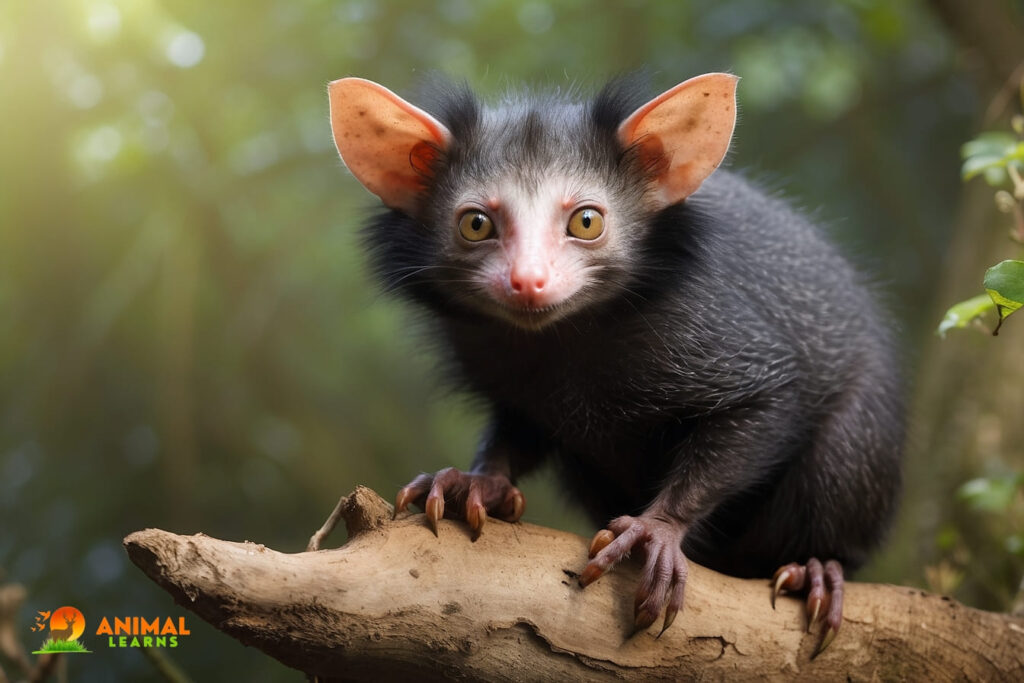
| Attribute | Information |
| Scientific Name | Daubentonia madagascariensis |
| Size | Length: Up to 16 inches (40 cm) |
| Diet | Omnivorous, primarily insectivorous, with |
| a specialized middle finger for extracting | |
| insects from tree bark | |
| Group | Mammal (Primate) |
| Location | Madagascar, inhabiting various forest types |
| Running Speed | Agile climbers, not designed for speed |
The middle finger of the Aye-Aye, a nocturnal lemur species indigenous to Madagascar, is extremely adapted and resembles an extended, bony, and skillful probing instrument.
They can extricate insects from tree bark thanks to their special adaption. The Aye-Aye is a member of the monkey family that is genuinely remarkable due to its odd look and behavior.
Bactrian Camel

| Attribute | Information |
| Scientific Name | Camelus bactrianus |
| Size | Height at the hump: Up to 7 feet (2.1 meters) |
| Diet | Herbivorous, grazing on various desert plants |
| Group | Mammal (Camelid) |
| Location | Arid regions of Central Asia |
| Running Speed | Capable of running at speeds of up to 40 mph |
Native to the dry areas of Central Asia, Bactrian Camels have large, rubbery lips that make them ideal for grabbing and eating hard desert plants. These resilient, two-humped camels have been essential to human survival in these difficult areas and are remarkably suited to their tough surroundings.
Unusual Lips in the Animal World
Big lips animal, while not typically associated with cosmetic appeal, often serve essential functions in the animal kingdom. Animals like the Platypus, not usually thought of for their lips, possess specialized fleshy mouthparts used for locating and capturing aquatic invertebrates.
In contrast, animals like the Gharial, with their distinct lips, are piscivorous specialists, aiding them in precise fish-catching. Nature’s variety doesn’t stop there; some primates, like the Mandrill and Proboscis Monkey, display vibrant facial colors and relatively large lips, playing key roles in their social dynamics.
As we ponder these fascinating adaptations, it’s clear that big lips in the animal kingdom serve as a testament to the diverse evolutionary pathways that have unfolded over millennia.
FAQs
What is a big lips animal?
Big lips animals are creatures with prominent or distinctive lip features relative to their species, often serving specific functions.
Why do some animals have big lips?
Big lips in animals can have various purposes, including vocalizations, feeding, thermoregulation, and even social signaling.
Which animal has the biggest lips?
Among notable examples, the Elephant Seal possesses some of the most substantial lips, used for vocalizations and thermoregulation.
Are big lips in animals always for feeding?
No, big lips may serve multiple functions, including attracting mates, maintaining social hierarchy, and adapting to specific environmental conditions.
Are big lips found in both land and marine animals?
Yes, big lips can be found in animals inhabiting terrestrial, aquatic, and marine environments, each tailored to their needs.

